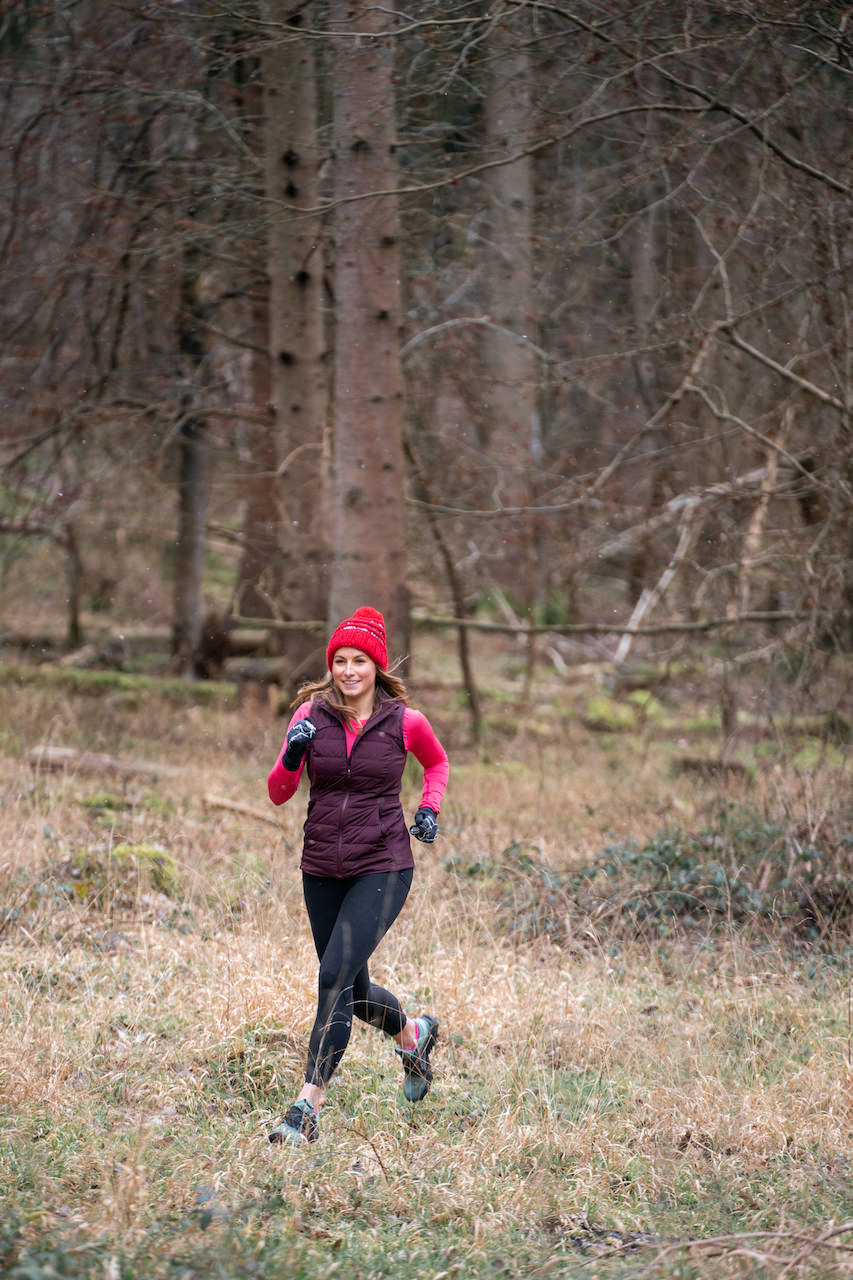You’ve probably heard of heart rate training before. It’s just like it says on the tin really – instead of tracking your runs using speed, you focus on heart rate data.
The idea is that this provides a more accurate view of the effort you’re actually putting in at any given time. Your body doesn’t know about your minute per mile pace but it does know about how fast your heart is beating.
Low heart rate training adopts this premise but focuses specifically on trying to maintain a comparatively low heart rate. It was pioneered by running coach Phil Maffetone, giving it it’s training name ‘The Maffetone Method’. Many runners, from amateurs to elites have seen improvements in their performance by following the Maffetone method…
Essentially, you’re running slower to get faster.
This week on the Cook Eat Run podcast, I chatted with Amanda Brooks from Run to the Finish all about Low Heart Rate training. Give it a listen here.
Chatting with Amanda really got me thinking about my own training, and how now feels like a great time to give Low Heart Rate training a go with no races on the horizon anytime soon. I looked back at my own easy runs over the past month and was pleased to see that all of mine have an average heart rate lower than LHR training would prescribe (this is average and I haven’t looked at every individual mile to check if they would be LHR ‘compliant’ ie under a certain HR per mile).
The Benefits Of Low Heart-Rate Training
Help Prevent Overtraining
For all its health benefits, running does also place a lot of stress on the body – both on our muscles and joints and our nervous system. Overtraining is very common in runners at any level and a key way to prevent this is by slowing down. Every single run shouldn’t be done at max capacity.
However, this is sometimes easier said than done. It’s easy to get swept away with posting about runs that are “brutal” and “epic” and raking in those Strava kudos. You set out with the intention of an easy run but the next thing you know you’re sprinting down the road chasing a segment or realising that if you don’t pick up the pace, you’re going to be late for work/dinner/childcare!
It’s also common to kid ourselves about what’s actually easy.
A training plan might say that a 10 minute mile is your easy pace on paper, but your body isn’t necessarily going to agree. It changes day to day – depend on how you’ve slept, what other sessions you’ve done, other things you have going on in your life. Stress is STRESS!
Basing effort on heart rate instead allows you to check in with what’s actually going on in your body each day, rather than just what you think should be.
Prevent injuries
The majority of running injuries are caused by repeated strain and overuse. By slowing it down and reducing the stress on our bodies, as described above, you can really help to lessen the chances of suffering from these kinds of injuries.
Take it easy, listen to your body, allow adequate recovery and you’ll likely find you can run more without suffering from injuries.
Run faster with less effort
This is the carrot dangled in front of runners embarking on the Maffetone method for the first time. The theory is that you build up your aerobic base by running at a lower effort level, and in time your body can learn how to run faster at a lower heart rate. This will increase your endurance as you’ll be able to keep up the same pace for longer.
By running easy on your easy days and giving your body a chance to recover, you’ll also be able to push harder during your speedwork sessions. This will of course also help you to get faster.
Increase Mileage
Many runners find that when they slow down their runs, they have more energy to run more miles during the week. This can be really helpful particularly for those training for marathon and ultra-distances. Using a Low Heart Rate training plan can help you build a really strong base for whatever your long term running goals are.
How To Low Heart Rate Train
The 180 formula
Training in heart rate zones can sometimes sound complicated but the Maffetone Method is actually quite straightforward.
To get started, you just need to use the 180 formula to work out what your heart rate should be when you’re for your low heart rate training sessions. You simply subtract your age from 180 then modify depending on various factors. You can read more on these here but they include:
- Subtract an additional 5 if you’ve been injured recently
- Subtract an additional 5 if you get more than two colds per year
- Subtract an additional 10 if you’re recovering from a major illness
You then use this figure as your max heart rate for all runs. No runs should be done above this. And the first mile of all runs should be at 10 beats per minute slower.
If you’re following the Maffetone Method, it’s also suggested that you complete Maximum Aerobic Function tests to assess your progress.
How to Do a MAF Test?
- Warm up for 1 mile/10-15 mins (keeping at least 10 beats below max HR)
- Select a 5 mile/8KM course which you can use for all future tests. {3 miles if your current long run is less than 60 mins.)
- Run as close to your target max heart rate as you can for the entire distance. (Your pace is likely to reduce each mile as your HR rises due to cardiac drift.)
- Complete the MAF test every month or 8 weeks
Your times should consistently improve as your aerobic fitness improves. If you see that times are getting slower then it might be a sign that your intensity is too high in training. Ir that another area of your life is adding stress (eg not sleeping enough, too much caffeine/alcohol, work/family etc). This too will indicate the need to back off on your running.
Be patient
The main thing you need if you’re going to try low heart rate training is patience. For the first few weeks and months, you’re likely to see your averages paces slow dramatically. You’re going to need to slow right down. And probably combine walking and running at first to keep your heart rate low enough.
However, you should find that over time you’re able to run consistently with a low heart rate. And your pace will increase too. The overall aim is to be able to run faster for longer while placing less stress on your body.
Things like the weather, your sleep, life stress and of course, route terrain will all impact your HR. You may find yourself having to walk regularly to keep under your calculated max HR. Stick with it….
Depending on your base when you start, typically runners start to see improvements in their easy pace at LHR within 3-6 months. Now could be the ideal time to give it a go with limited races on the cards right now.
Mind your form
Lots of runners find that their form suffers when they slow right down. As they don’t shorten their stride enough to accommodate for the reduced pace. Focus on landing on a bent leg with a mid-foot stride. Picture yourself gliding through the miles, rather than racing through like the gazelle you’re used to trying to be!
Use a chest strap heart rate monitor
Your running watch may have an in-built wrist HR monitor, however these typically aren’t super reliable. They’re fine to use if you just want to give low HR training a go. (I use my Garmin Fenix 6S to give an idea of HR). But if it’s something you want to adopt longer term then you probably want to invest in a chest strap. Most running watches will sync with a variety of different straps, so just check out what works with your model.
Speedwork?
This is a no to start with. However, after chatting with Amanda she let me know that after the initial base building few months where all your runs need to be under your max heart rate number, you can transition to an 80:20 rule. Running 80% of your miles/runs easy with 20% as speedwork/tempo runs.
Have you tried low heart rate training? How did you find it?




I do using this method about 5 ish month … and so true my pace get faster naturally … big fan!